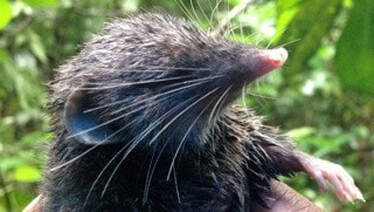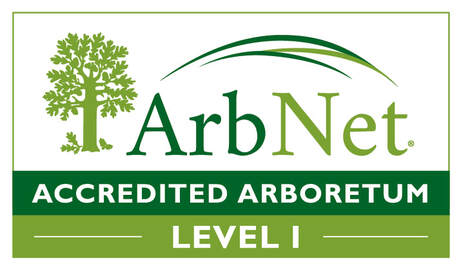Contemplating, the audiences respond cautiously. A timid “25”, a questioning “100”, even a bold “500” fall far short of the mark. Would you believe, on average, 20,000 new species are discovered each year? Please do, because it’s a figure that astounds me as well! There are many likely reasons for this wellspring of discovery: more field scientists scouring the wilderness, greater and enhanced technologies, such as drone detection and satellite reconnaissance, and contracting wild regions of our planet. Regardless of the reasons, the result is a vast assemblage of plants and animals the world has yet to meet. As a zoologist, such discovery ushers in the imperative to learn all we can about this “new” life, share its story with all those who would listen and learn, and do our utmost to protect it. Then, comes the wow and wonder. As I read about such creatures and query my friends and colleagues who are at the forefront of these discoveries, I revel in amazement at the phenomenal diversity of life and the remarkable abilities these creatures possess.  Meet Thor’s Hero Shrew. Recently discovered, this small insectivorous mammal sounds like a graphic novel beast…a humble creature with superhero powers bestowed upon its modest frame. In this case, reality challenges fiction. When we consider the discovery of a small creature–less than one foot in length and two ounces in weight–living within the heart of Africa’s vast Congo wilderness, we begin to see how such creatures avoid detection and wonder what other life awaits discovery. When indigenous people introduced zoologists to the Hero Shrew, they first proclaimed it’s invincibility. Then, they proceeded to demonstrate this invincibility by having a full grown tribesman stand on the back of the tiny animal. To the amazement of the scientists, the shrew would hold still to withstand the weight of a grown man and quickly reanimate to scurry off with no ill effects. For comparison, that’s the equivalent of a human supporting the weight of the space shuttle on their back! Virtually any other creature of its size would have perished but Thor’s Hero Shrew is no ordinary creature. In fact, Thor’s Hero Shrew and its close cousin, the Hero Shrew possess something unique among mammals–interlocking vertebrae. Its skeleton is one of Mother Nature’s engineering marvels, boasting a specialized spinal column with few bony projections and a reinforced cage-like design which can bear absurdly high weight loads. What’s more, through a process known as sagittal flexing, the shortened spine enables the animal to turn back on itself–virtually folding itself in half–within the tight confines of a tunnel system. Scientists theorize this is one of the keys to Thor’s Hero Shrew’s success, enabling them to thrive in The Democratic Republic of Congo’s Tshuapa River forests, probing the nearly inaccessible spaces between concrete-like Palm Tree trunks and leaves where juicy grubs dwell. Such a design also confers an advantage over the competition–the ability to wedge beneath and lever extremely heavy rocks and logs to capture dinner and evade danger. With the addition of a stout skull and thick, flattened ribs, Hero Shrews are alleged to thwart the formidable teeth and claws of leopards and Honey Badgers alike! While such defenses have yet to be documented, it’s safe to say you don’t get named after the God of Thunder for being meek or weak. Thor’s Hero Shrew is small yet mighty, impervious to injury that would spell the doom of nearly any other creature its size, and it dwells in one of the most dangerous and competitive habitats on the planet. For me, the fascinating aspect to discovery is the startling freshness which is sure to usher in further knowledge. When it comes to Thor’s Hero Shrew, what we do know is remarkable, yet we still have a creature which is scarcely studied. Questions abound. Is it capable of consuming up to 300% of its body weight each day like its smaller brethren? Can it navigate it’s labyrinth tunnels systems using echolocation like its fellow shrews? Does it possess venom like North America’s only venomous animal and Fairfield County resident, The Northern short-tailed shrew? What other secrets does this little forest god conceal? The wonderful thing about discovery is that it frequently crops up where and when least expected, and it is increasingly made by students. Yes…students. It’s one thing to discover new species in the Congo, yet in recent years students have discovered new species of spiders in Missouri, salamanders in Georgia and frogs in New York–within New York City limits (more to come on that mystery creature)! While we certainly have our work cut out for us when it comes to the planet’s stewardship in the 21st century, I have good reason for optimism. With our next generation and Mighty Thor leading the way, I am ever more hopeful for our wild world. This blog post first appeared in the Greenwich Sentinel on July 3, 2020, as part of their Wildly Successful series by Jim Knox.
2 Comments
Katie
9/16/2020 01:35:26 pm
There are 20,000 new species discovered eadh year - how many are lost - I would guess at least half of that number.
Reply
Leave a Reply. |
Archives
July 2024
|
Connecticut’s Beardsley Zoo is dedicated to acquainting a diverse public to the delicate balance that exists between living things and their environment.
Connecticut's Beardsley Zoo is a 501(c)(3) not for profit owned and operated by the Connecticut Zoological Society.
Connecticut's Beardsley Zoo is a 501(c)(3) not for profit owned and operated by the Connecticut Zoological Society.
© 2022 Connecticut's Beardsley Zoo


 RSS Feed
RSS Feed





